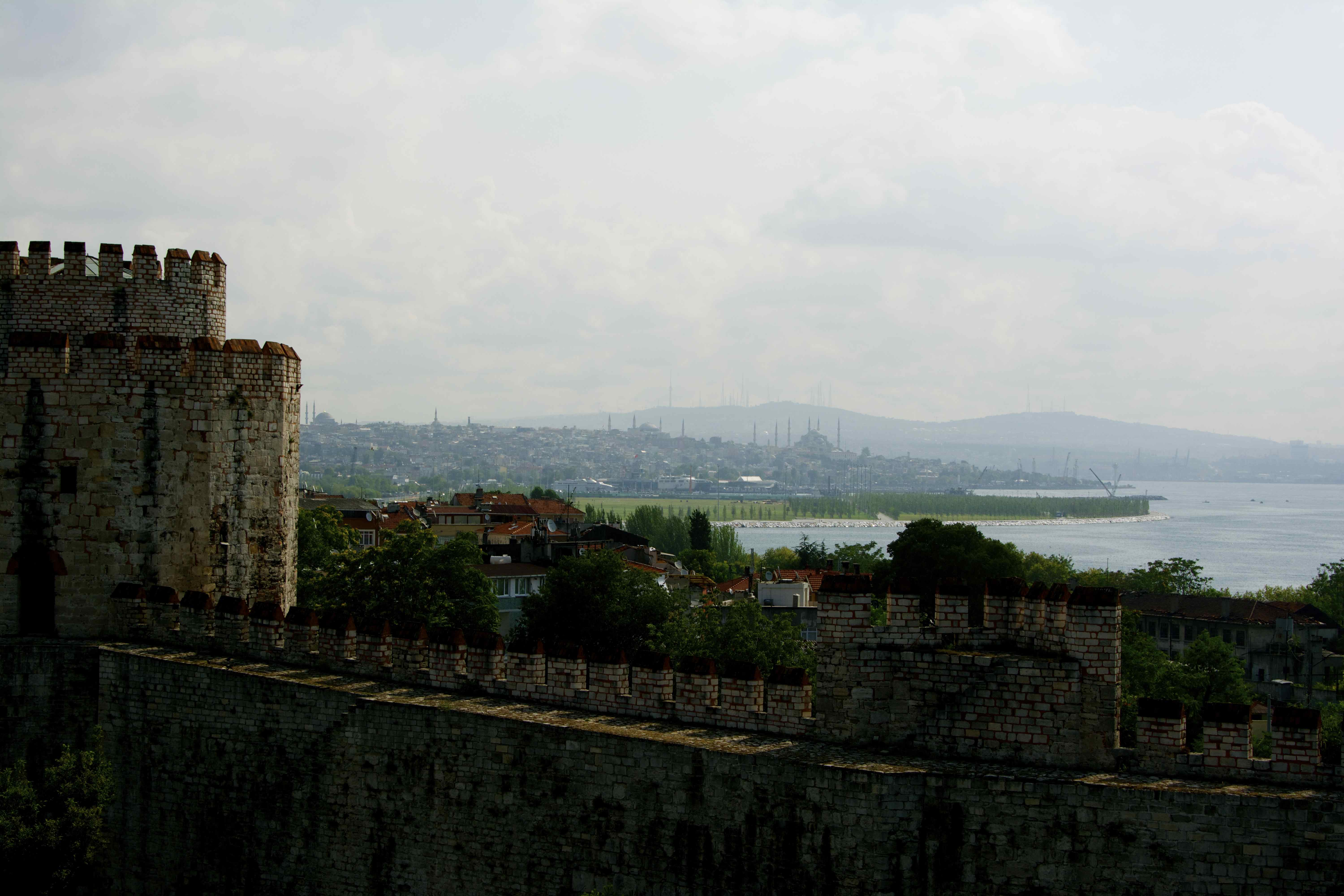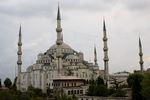Istanbul, farewell
 Saturday, August 9, 2014 at 10:18AM
Saturday, August 9, 2014 at 10:18AM My last day in Istanbul. A city of deep history, bewildering diversity, a multi-layered heritage going back to ancient times, and a vigorous embrace of modernity. I’ve learned so much since I’ve been here that it feels like much more than a week has passed. I’ve learned what the city can still teach about the life and surroundings of its inhabitants thirteen centuries ago – an effort of imagination, given the vast accumulation of relics from later times that stand atop the city the Byzantines would have known. Long before the population explosion and resulting relentless development of the past twenty years, Istanbul was never especially sentimental about its pre-Ottoman history. Yet enough remains to enable an imaginative historian – or writer – to assemble a mosaic of what early Byzantine Constantiople would have looked like. I’ve filled two notebooks and taken hundreds of pictures. I have what I came for.
As a traveler, Istanbul astounds. In the Old City, from Sultanahmet to Eminönü, you can hear dozens of languages spoken. At any restaurant in the main tourist areas, you will find waiters who are fluent in half a dozen tongues in addition to their own. Alongside families from the Emirates and Saudi Arabia with women in burkas and children in strollers, you will see burly Aussie men in sleeveless tank tops, Frenchwomen in halter tops and short-shorts, backpackers loaded front and back with their essentials who haven’t showered for days, and modernity-craving young Turks in spray-on jeans and t-shirts with logos from Old Navy and Victoria’s Secret. You can’t walk a step without being approached by a would-be “tour guide” or carpet seller or the owner of a shop selling the famous Iznik ceramics, who will follow you trying guess where you’re from, in several languages if you don’t immediately respond to their first approach. It’s impossible to avoid walking through someone’s snapshot of their family against the backdrop of the Blue Mosque or Hagia Sophia, still staring each other down across the plaza after all these centuries.
I suppose it’s possible to find bad food in Istanbul. So far, however, I haven’t. I could live on the desserts alone, quite happily. Even the ice cream is sprinkled with ground pistachios. You can stand a spoon in the coffee – the key is to know when to stop, before you ingest the mud at the bottom. Avoid the Nescafe. But you knew that.
Heaven must be something like sitting on a rooftop terrace at sundown, white tablecloths under a plate of meze, eating olives cured with herbs and munching baklava after your meal, while watching the lights come on across the city and the tankers sailing majestically through the blue, blue waters of the Bosphorus. Even a non-believer can be transported by the haunting calls to prayer ululating from the muezzin’s loudspeakers, a call and response that echoes back and forth across the entire city five times a day. The prayer schedule can be inconvenient for those who like to sleep in or go to bed early. But you certainly know you are in a place that stands poised between continents, self-consciously aware of its unique place in the world. Neither Europe nor Asia, neither Middle East nor Mediterranean, but a mélange of all the above. It’s a heady mixture.
While I’ve been here, I’ve walked virtually the entire length of the ancient Theodosian Walls, from the Marmara to the south to the Golden Horn in the north. I’ve walked along the Golden Horn itself from Blachernae to Topkapı, and around to Sultanahmet again. I’ve visited with archaeologists at the Bathonea Project west of the city, who were incredibly kind and generous with their time and their knowledge, showing me a site that could easily be at the beginning stages of a hundred-year dig on the scale of Troy and Ephesus, if only budget issues and pressures from developers spare their 700,000-year relics that lie under corn fields and thick underbrush.
I’ve had the rare privilege of visiting the well-hidden work area, buried in an industrial wasteland near the international ferry terminal, where archaeologists and conservationists and maritime experts try to piece together the enormous treasure trove discovered when the Marmara Tunnel project uncovered a vast array of perfectly preserved ships and their cargoes from the 5th to the 8th centuries. I touched the planking of a 1500-year-old ship. I met the young archaeologists working feverishly to catalog and preserve thousands of artifacts, from fragments of ship’s hulls to pottery shards to jars of peaches and olives that sank into the harbor mud in Roman and early Byzantine times. I sat with a nautical reconstruction specialist at his computer and saw how the team has used precise digital measurement and advanced 3D modeling to recreate the exact dimensions and construction methods of one of the few intact Byzantine dromon ever found.
The enthusiasm and generosity of these young archaeologists and academics was humbling. Their willingness to share their work and talk about their findings with a random American historical novelist left me feeling honored. It also gave me a profound sense of obligation to tell the story, not only of the work these incredible people are doing but of the lives and times they are piecing together, bit by bit, out of the soil and mud beneath a rapidly growing city voracious for land to build on.
Profound thanks to Haldun Aydingün and the team of the Istanbul Prehistoric Research Project; Namik Kiliç, Evren Türkmenoğlu, and the team of the Istanbul University Yenikapı Shipwrecks Project; and Inci Türkoğlu, PhD, who was gracious enough to arrange for me to visit these precious sites and the dedicated people who are working to uncover their secrets. My thanks too to the wonderful staff of the Blue House Hotel, who have been as welcoming and helpful as any visitor 10,000 miles from home could wish.
Tomorrow I will fly to Antalya. There, I hope to visit the ruins of many of the most prosperous cities of Roman and Byzantine times along the Mediterranean coast of Asia Minor. Thus will begin the more free-roaming stage of my journey, as I attempt to retrace the paths and places that might be crucial to my story. I’ll also need to start working hard on my Turkish. Once I leave Antalya, I’ll be traveling to areas that are not quite so accustomed to tourists. At a bare minimum, I hope to learn how to ask how to find the bathroom.

